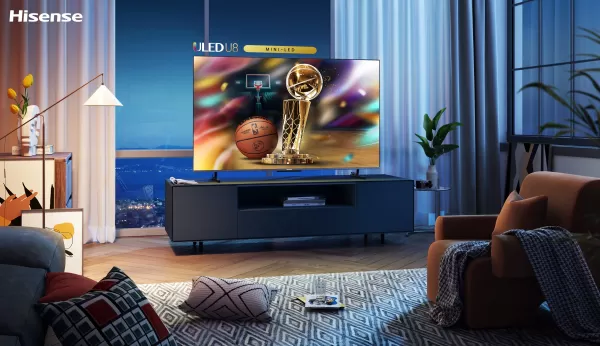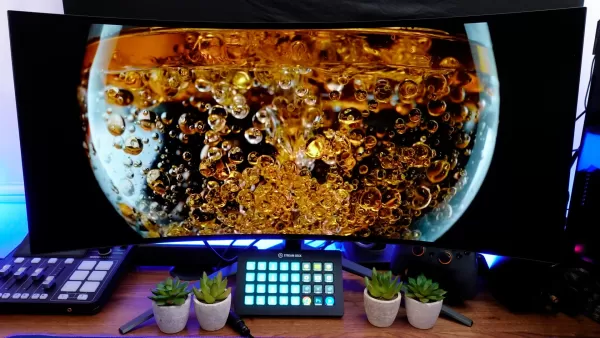When I purchased my first OLED TV, the LG E8 55-inch back in 2019, just before the world retreated into isolation, it became the ultimate companion during those secluded times. At first, I was only vaguely familiar with OLED (organic light-emitting diode) technology. I knew it used self-lit pixels, unlike the backlight in LCD displays, offering infinite contrast. But after immersing myself in the visually stunning worlds of Final Fantasy XV and The Last of Us Part II, I realized what a game-changer OLED truly was. It felt like stepping into a vivid, nostalgic dream. My journey didn't end with the E8; a few years later, I upgraded to the LG C2 65-inch TV. Since then, I've reviewed numerous devices with OLED displays and discovered that not all OLED screens are the same. In fact, there are several types of OLED technologies, but the three you should really know about are WOLED, QD-OLED, and AMOLED.
 WOLED, QD-OLED, and AMOLED: How They Work
WOLED, QD-OLED, and AMOLED: How They Work
OLED technology has been around for decades, with companies like Kodak and Mitsubishi experimenting with various iterations. It was LG's introduction of OLED TVs in the early 2010s that brought this technology into the mainstream.
LG's version of OLED is known as WOLED (White OLED). Although LG markets it simply as "OLED," it's essential to understand that WOLED uses a white OLED layer with an RGBW color filter. This approach addresses the issue of burn-in, which is accelerated by the differing deterioration rates of red, green, and blue emitters in traditional OLEDs. However, WOLED has its own challenges, such as imbalanced brightness and reduced color volume due to the filtering of light through the RGBW filter. Higher-end WOLED displays attempt to mitigate this with Micro Lens Array technology, which enhances light focus.
In 2022, Samsung introduced QD-OLED (Quantum Dot OLED), which replaces the white OLED layer with a blue one that interacts with quantum dot color converters. Unlike the RGBW filter, quantum dots absorb and convert light without losing brightness, resulting in richer colors and higher overall brightness.
AMOLED, on the other hand, stands in its own category. It's similar to WOLED but includes a thin-film transistor (TFT) layer for faster pixel activation. While this improves refresh rates and viewing angles, it comes at the expense of OLED's signature "infinite" contrast.
 WOLED, QD-OLED, and AMOLED: Which Is Better for Gaming?
WOLED, QD-OLED, and AMOLED: Which Is Better for Gaming?
Choosing the right OLED technology for gaming depends on your specific needs and preferences. Generally, QD-OLED is considered the best for gaming, but there are scenarios where WOLED or AMOLED might be more suitable.
AMOLED displays are predominantly found in smartphones and laptops due to their flexibility and high refresh rates. They're less common in TVs because of their cost, and they perform poorly in direct sunlight due to lower peak brightness.
For gaming monitors and TVs, you typically have the choice between WOLED (marketed as OLED) and QD-OLED. WOLED offers high brightness in whites but loses some color brightness due to the RGBW filter. QD-OLED, with its quantum dot technology, provides superior color and brightness. However, in environments with significant glare, WOLED might be less distracting because it maintains black levels better than QD-OLED, which can exhibit a purplish tint without its polarizing layer.
Ultimately, the quality of these displays often boils down to their specifications and price. Generally, the more you invest, the better the visual experience you'll get.
The Future of OLED Is PHOLED
While there are many types of OLED, one promising technology is PHOLED (Phosphorescent OLED), which uses phosphorescent materials to convert energy into light more efficiently. The main challenge with PHOLED has been the shorter lifespan of its blue emitters compared to green and red. Recently, LG announced a breakthrough in blue PHOLED, paving the way for mass production. Dubbed "Dream OLED," PHOLED offers 100% luminous efficiency, far surpassing the 25% efficiency of fluorescent OLEDs, promising brighter displays with lower power consumption.
Although PHOLED TVs won't be available soon, we can expect to see this technology in smartphones and tablets in the near future.








